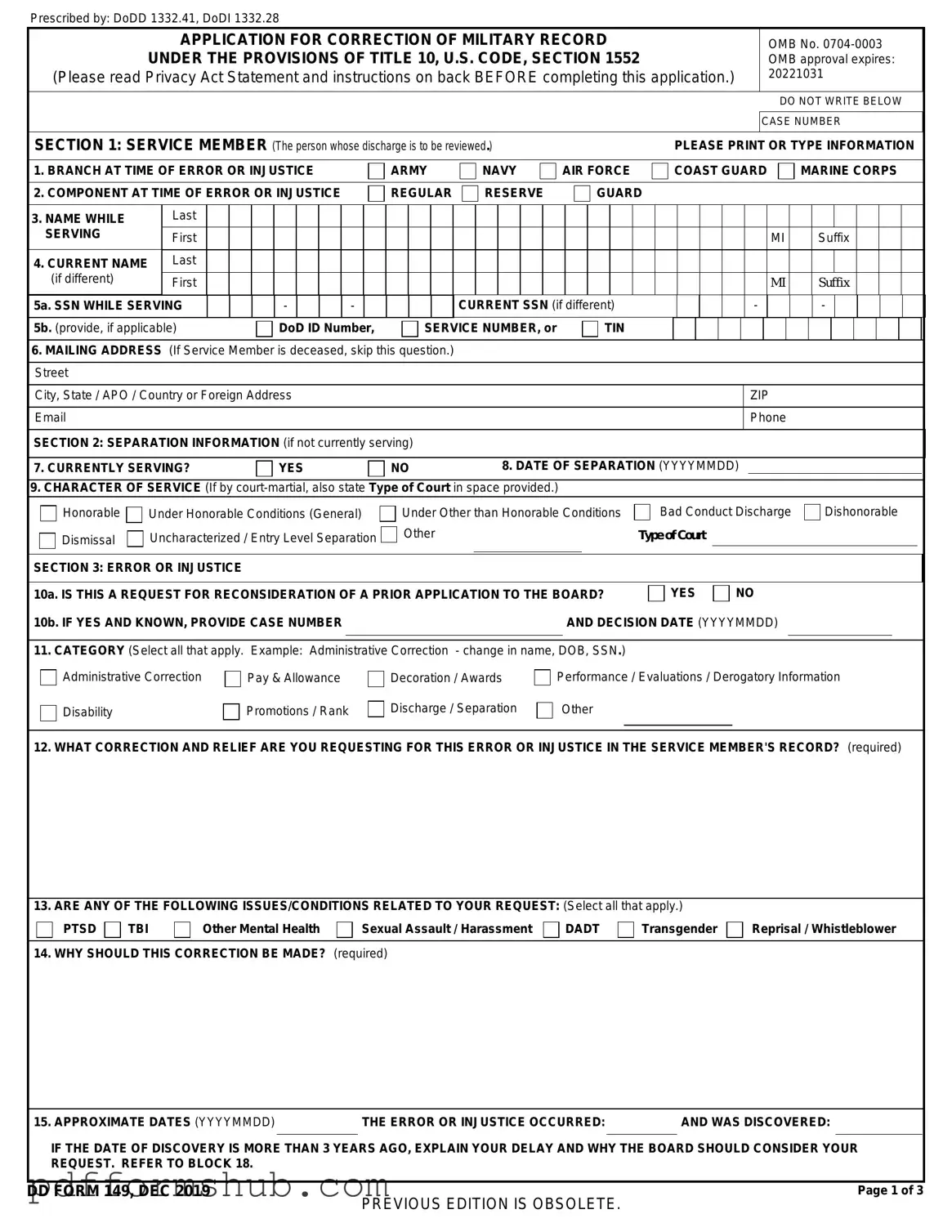The DD 149 form plays a crucial role in the lives of military personnel and veterans seeking to correct their military records. This form is primarily used to request a review and possible change of a discharge characterization or to amend other aspects of a service member’s record. It serves as a formal avenue for individuals who believe their discharge status does not accurately reflect their service or circumstances. Completing the DD 149 requires careful attention to detail, as applicants must provide specific information about their military service, the nature of the error, and the desired changes. Furthermore, supporting documents may be necessary to substantiate claims, making it essential to gather all relevant information before submission. The review process can be complex and time-consuming, often involving multiple agencies, so understanding the requirements and implications of this form is vital for those seeking to navigate the system effectively. Taking the first step with the DD 149 can lead to significant changes in a veteran’s life, impacting eligibility for benefits and overall recognition of their service. The urgency of addressing any discrepancies in military records cannot be overstated, as these records can influence various aspects of a veteran's future.
